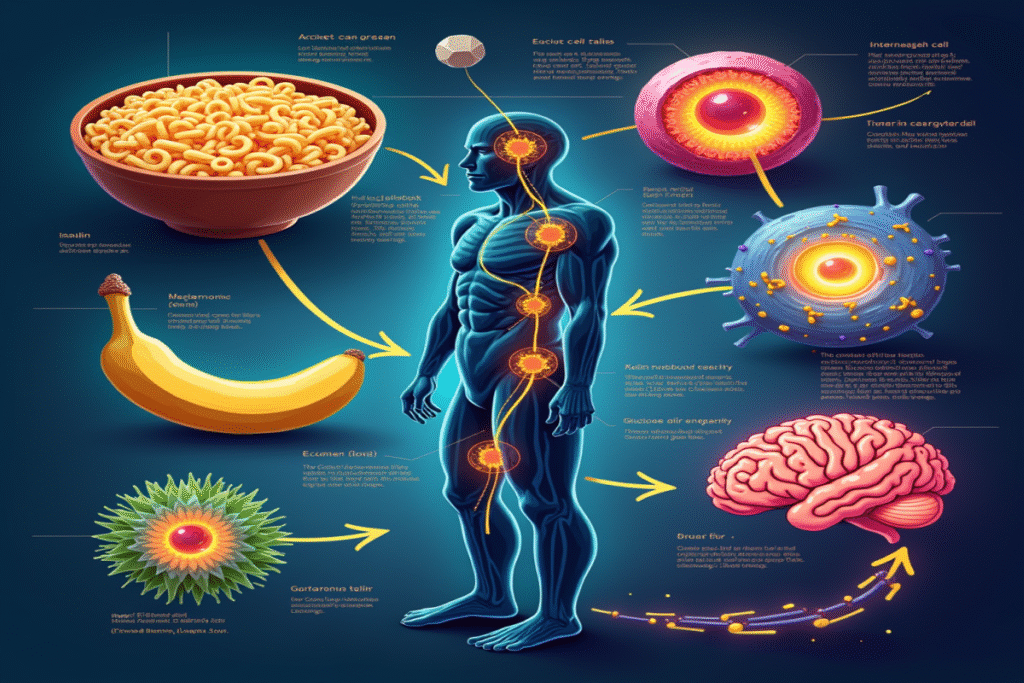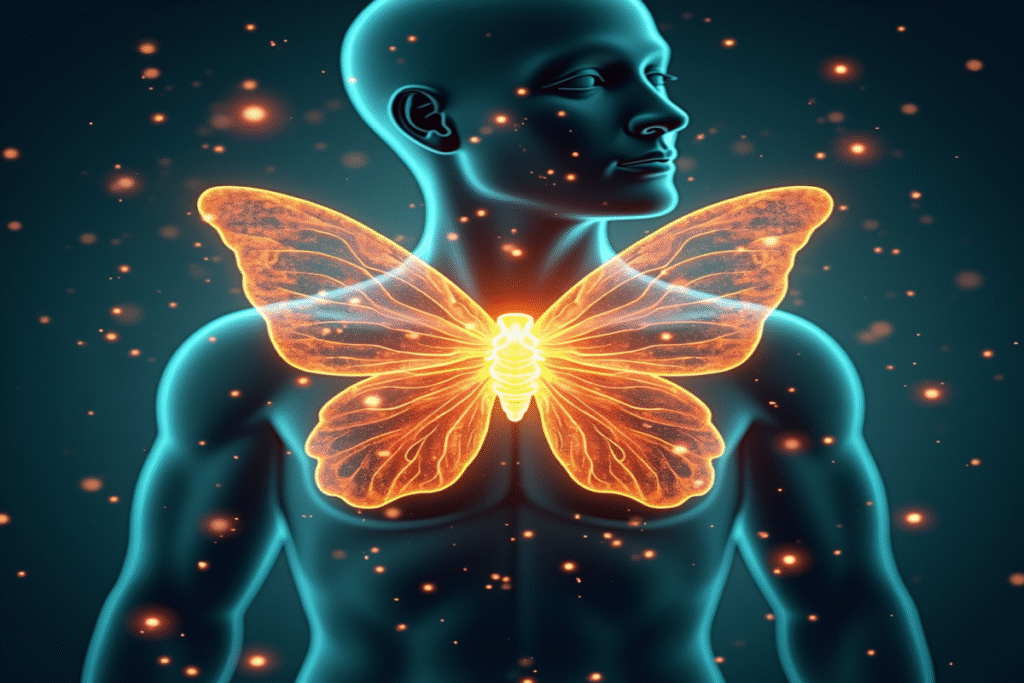Indice
- Introduction: The Invisible World of Bacteria
- What Are Bacteria? A Comprehensive Definition
- The Structure of Bacterial Cells
- How Bacteria Reproduce: Binary Fission and Beyond
- The Role of Good Bacteria: Beneficial Microbes in Health
- Understanding Pathogens: The Impact of Harmful Bacteria
- Bacterial Ecology: Where Bacteria Live and Thrive
- Antibiotics and Resistance: The Ongoing Battle
- Biotechnology and Bacteria: Innovative Applications
- Conclusion: The Dual Nature of Bacteria
Introduction: The Invisible World of Bacteria

The Ubiquity of Bacteria
Bacteria are among the most abundant and diverse organisms on Earth, existing in virtually every habitat—from the deepest oceans to the highest mountains, and even in extreme environments like hot springs and deep-sea vents. This ubiquity underscores their significance in various ecological processes. It is estimated that there are approximately 5 nonillion (5 x 10^30) bacteria on our planet, highlighting their role in maintaining ecological balance and the cycling of nutrients.
The Structure of Bacteria
Bacteria are unicellular prokaryotes, characterized by their simple structure. They lack a defined nucleus and membrane-bound organelles, which sets them apart from eukaryotic cells. The bacterial cell is typically surrounded by a rigid cell wall, which provides shape and protection. Inside, the cytoplasm contains ribosomes for protein synthesis and a single circular DNA molecule (chromosome). Some bacteria also possess additional small DNA circles called plasmids, which can confer beneficial traits such as antibiotic resistance.
The Roles of Bacteria in Ecosystems
Bacteria play critical roles in various biological and ecological processes. They are essential for the decomposition of organic matter, breaking down dead organisms and returning nutrients to the soil, which supports plant growth. Certain bacteria, known as nitrogen-fixing bacteria, convert atmospheric nitrogen into a usable form for plants, thus maintaining soil fertility. Other bacteria are crucial in biogeochemical cycles, such as the carbon and sulfur cycles, illustrating their fundamental contributions to the environment. Understanding these roles is vital for appreciating the balance of ecosystems and the impacts of human activity on bacterial populations.
What Are Bacteria? A Comprehensive Definition

The Basic Characteristics of Bacteria
Bacteria are microscopic, single-celled organisms classified as prokaryotes, distinguished by their lack of a nucleus and membrane-bound organelles. They are typically measured in micrometers and can take on various shapes, including spherical (cocci), rod-like (bacilli), and spiral (spirilla). Most bacteria reproduce asexually through binary fission, where a single cell divides into two identical daughter cells. Their genetic material, a single circular DNA strand, is located in the cytoplasm, along with ribosomes essential for protein synthesis. Bacteria also possess a cell wall composed mainly of peptidoglycan, which provides structural support and protection.
The Diversity of Bacterial Life
Bacteria exhibit an extraordinary diversity in terms of metabolic processes, habitats, and ecological roles. They can be classified based on their energy sources; for instance, some bacteria are autotrophs, synthesizing their own food using sunlight or inorganic compounds, while others are heterotrophs, relying on organic substances for nourishment. This metabolic versatility allows bacteria to thrive in a range of environments, including extreme conditions where few other life forms can survive. Furthermore, bacterial species can have various symbiotic relationships with plants, animals, and other microorganisms, contributing to the complexity of ecosystems.
The Importance of Bacteria in Human Life
Bacteria encompass both beneficial and harmful species, playing a dual role in human life. Beneficial bacteria, such as those found in the human gut, aid in digestion and synthesize essential vitamins, contributing to overall health. In biotechnology, bacteria are employed in processes like fermentation, antibiotic production, and environmental bioremediation to clean up polluted sites. Conversely, pathogenic bacteria can cause diseases ranging from mild infections to severe illnesses. Understanding the distinction between beneficial and harmful bacteria is crucial for developing effective medical treatments and maintaining human health. The overall impact of bacteria on human life exemplifies their complexity and significance in both health and disease.
The Structure of Bacterial Cells

Cell Wall and Membrane
The bacterial cell is characterized by a rigid cell wall, primarily composed of peptidoglycan, which provides structural integrity and shape. The cell wall plays a crucial role in protecting the cell from physical damage and osmotic pressure. Beneath the cell wall lies the cytoplasmic membrane, a lipid bilayer that controls the movement of substances in and out of the cell. This selective permeability is vital for maintaining the internal environment of the bacterium and allows it to respond effectively to changes in its surroundings.
Cytoplasm and Genetic Material
Inside the bacterial cell, the cytoplasm is a jelly-like substance that contains various components necessary for cellular functions. This includes ribosomes, which are essential for protein synthesis, and the nucleoid, which houses the bacterial chromosome—a single, circular DNA molecule. In addition to the chromosome, many bacteria may carry plasmids—small, circular DNA fragments that can confer advantageous traits such as antibiotic resistance. The organization of genetic material in bacteria is distinctly different from that in eukaryotes, where DNA is housed within a nucleus.
Surface Structures: Pili and Flagella
Bacteria may also possess surface structures such as pili and flagella that play key roles in their mobility and interaction with the environment. Pili are hair-like appendages that enable bacteria to adhere to surfaces and facilitate the exchange of genetic material through a process known as conjugation. Flagella, on the other hand, are long, whip-like structures that provide locomotion, allowing bacteria to move toward favorable environments or away from harmful substances. The presence and arrangement of these structures can influence a bacterium’s ability to colonize specific niches and evade host defenses.
How Bacteria Reproduce: Binary Fission and Beyond

Binary Fission: The Primary Mode of Reproduction
Bacteria predominantly reproduce asexually through a process known as binary fission. This mechanism involves the replication of the bacterial chromosome, which is a single circular strand of DNA. Once the DNA is duplicated, the cell elongates and divides into two genetically identical daughter cells. This division usually occurs rapidly, allowing bacterial populations to grow exponentially under optimal conditions. The generation time for bacteria can vary significantly, with some species dividing in as little as 20 minutes, which contributes to their adaptability and success in various environments.
Alternative Reproductive Strategies
While binary fission is the primary mode of reproduction for bacteria, some species can adopt alternative reproductive strategies. For instance, certain bacteria can reproduce through budding, where a new organism develops from the surface of the parent cell. Others may engage in fragmentation, where the parent cell breaks into several pieces, each of which can grow into a new organism. These alternative methods, although less common, provide bacteria with additional means of proliferation in specific environmental contexts.
The Role of Horizontal Gene Transfer
Another significant aspect of bacterial reproduction is horizontal gene transfer (HGT). This process allows bacteria to exchange genetic material with one another in ways that do not involve reproduction. HGT can occur through transformation, where bacteria take up free DNA from their surroundings; transduction, which involves the transfer of DNA through bacteriophages (viruses that infect bacteria); and conjugation, where genetic material is directly transferred between bacterial cells through specialized structures called pili. This genetic exchange promotes genetic diversity among bacterial populations, enabling them to adapt rapidly to changing environments, acquire antibiotic resistance, and enhance their survival chances. This adaptability and resilience are critical for understanding both the beneficial and harmful roles of bacteria in medicine and ecology.
The Role of Good Bacteria: Beneficial Microbes in Health

The Human Microbiome
The human microbiome refers to the vast community of microorganisms residing in and on our bodies, including trillions of bacteria. These bacteria play a crucial role in maintaining our health by aiding digestion, producing vitamins, and regulating the immune system. Primarily found in the gut, beneficial bacteria help break down complex carbohydrates, synthesize essential nutrients like vitamin K and some B vitamins, and protect against harmful pathogens. A balanced microbiome is vital for optimal health, and disturbances caused by antibiotics, poor diet, or illness can lead to dysbiosis, contributing to health issues like obesity, diabetes, and inflammatory bowel diseases.
Immune System Support
Good bacteria significantly impact the immune system, serving as a first line of defense against infections and helping to modulate immune responses. These beneficial microbes maintain the integrity of the gut barrier, preventing harmful bacteria and toxins from entering the bloodstream. They also stimulate the production of immune cells and antibodies, fostering a robust immune response. Research has shown that individuals with a diverse and balanced gut microbiota exhibit lower rates of allergies, autoimmune diseases, and infections, highlighting the essential interplay between our microbiome and immune health.
The Role of Probiotics
Probiotics are live microorganisms that, when consumed in adequate amounts, confer health benefits to the host. These beneficial bacteria are commonly found in fermented foods such as yogurt, kefir, sauerkraut, and kimchi, as well as dietary supplements. Probiotics can help restore balance in the gut microbiome, especially after antibiotic use or during gastrointestinal distress. Clinical studies have demonstrated that certain probiotic strains can alleviate symptoms of irritable bowel syndrome (IBS), reduce the duration of infectious diarrhea, and even enhance mental well-being by influencing the gut-brain axis. By supporting gut health and overall wellness, probiotics exemplify the positive impact of good bacteria in our lives.
Understanding Pathogens: The Impact of Harmful Bacteria

The Nature of Pathogenic Bacteria
Pathogenic bacteria are microorganisms that can cause disease in hosts, including humans, animals, and plants. Unlike beneficial bacteria, which contribute positively to health and ecosystem functions, pathogenic bacteria have evolved various mechanisms to invade host tissues, evade the immune system, and disrupt normal biological processes. These bacteria can produce toxins, outcompete host cells for nutrients, and disrupt cellular functions, leading to a wide range of diseases. Some well-known pathogenic bacteria include *Escherichia coli* (E. coli), *Staphylococcus aureus*, and *Salmonella*, each of which is associated with specific infections and health complications.
The methods by which pathogenic bacteria cause infections can vary significantly. They may enter the body through various routes, such as ingestion, inhalation, or breaks in the skin. Once inside, these bacteria can adhere to surfaces, penetrate tissues, and multiply rapidly. Many pathogenic bacteria produce virulence factors, such as enzymes and toxins that enhance their ability to survive and cause disease. For instance, the toxin produced by *Clostridium botulinum* can lead to botulism, a severe form of food poisoning, while the invasion strategies of *Salmonella* can lead to gastroenteritis. Understanding these mechanisms is important for developing effective treatments and preventive measures.
The Consequences of Harmful Bacteria on Public Health
The presence of harmful bacteria poses significant challenges to public health systems worldwide. Bacterial infections can lead to a myriad of health issues, from mild, self-limiting illnesses to severe, life-threatening conditions. Antibiotic resistance is a growing concern, as the overuse and misuse of antibiotics have led to the emergence of multidrug-resistant strains of bacteria, rendering common treatments ineffective. This is exemplified by infections caused by *Methicillin-resistant Staphylococcus aureus* (MRSA) and *Carbapenem-resistant Enterobacteriaceae* (CRE). Effective infection control measures, including vaccination, hygiene practices, and responsible antibiotic use, are crucial in mitigating the impact of harmful bacteria on public health and enhancing the global response to infectious diseases.
Bacterial Ecology: Where Bacteria Live and Thrive

The Diverse Habitats of Bacteria
Bacteria occupy an astonishing array of habitats, showcasing their remarkable adaptability. From the soil beneath our feet to the depths of the ocean, bacteria are present in environments ranging from temperate forests to the polar ice caps. Extremophiles, a category of bacteria, thrive in extreme conditions, such as high temperatures in geothermal springs, high salinity in salt flats, and extreme acidity or alkalinity in hydrothermal vents. The ability of bacteria to colonize such varied niches highlights their role in shaping and sustaining ecosystems. These microorganisms are integral to nutrient cycling, facilitating the transfer of energy through food webs, and impacting the biochemical processes that occur in different ecosystems.
Bacterial Interactions with Other Organisms
Bacteria engage in a variety of interactions with other organisms, forming complex relationships that can be beneficial, neutral, or harmful. In many cases, bacteria establish symbiotic relationships with plants, animals, and other microorganisms. For example, certain soil bacteria form mutualistic partnerships with legumes, fixing atmospheric nitrogen and providing it in a form usable by plants. Similarly, bacteria in the human gut help digest food and protect against harmful pathogens, contributing positively to the host’s health. On the other hand, some bacteria can be pathogens that disrupt host functioning, leading to disease. These interactions are pivotal in understanding ecosystem dynamics and the roles bacteria play in both environmental health and disease ecology.
The Role of Bacteria in Biogeochemical Cycles
Bacteria are crucial players in biogeochemical cycles, including the carbon, nitrogen, sulfur, and phosphorus cycles. In the nitrogen cycle, nitrogen-fixing bacteria convert atmospheric nitrogen into ammonia, which is then utilized by plants to synthesize proteins and nucleic acids. Other bacteria oxidize ammonia to nitrites and nitrates, making nitrogen available for various life forms. In the carbon cycle, bacteria facilitate the decomposition of organic matter, breaking down dead organisms and recycling carbon back into the atmosphere in the form of carbon dioxide through processes such as respiration and fermentation. These cycles demonstrate the interconnectedness of bacterial ecology and the broader environmental context in which they operate, underscoring their importance in maintaining ecosystem health and stability.
Antibiotics and Resistance: The Ongoing Battle

The Role of Antibiotics in Medicine
Antibiotics are powerful medications used to treat bacterial infections by either killing bacteria or inhibiting their growth. The discovery of penicillin by Alexander Fleming in 1928 marked the beginning of the antibiotic era, revolutionizing the treatment of bacterial diseases and significantly reducing mortality rates associated with infections. Today, a wide variety of antibiotics are available, targeting different types of bacteria based on their unique cellular structures and metabolic pathways. Antibiotics have proven indispensable in modern medicine, allowing for successful treatments of conditions ranging from minor infections to life-threatening diseases such as pneumonia, sepsis, and tuberculosis.
The Challenge of Antibiotic Resistance
Despite their effectiveness, the excessive and often inappropriate use of antibiotics has led to a growing global concern: antibiotic resistance. This phenomenon occurs when bacteria evolve mechanisms to resist the effects of drugs that once effectively eradicated them. Key factors contributing to antibiotic resistance include the over-prescription of antibiotics, the use of these medications in livestock for growth promotion, and patients not completing prescribed antibiotic courses. As a result, common infections are becoming harder to treat, leading to longer hospital stays, increased medical costs, and a heightened risk of mortality. The rise of multidrug-resistant organisms such as Methicillin-resistant Staphylococcus aureus (MRSA) and Carbapenem-resistant Enterobacteriaceae (CRE) underscores the urgency to address this crisis.
Strategies to Combat Antibiotic Resistance
To combat antibiotic resistance, a multifaceted approach is required. Effective strategies include the promotion of antibiotic stewardship programs, which aim to optimize antibiotic treatment regimens to minimize overuse and unnecessary prescriptions. Additionally, enhanced diagnostic techniques can help identify bacterial infections more accurately, ensuring that antibiotics are prescribed only when necessary. Public awareness campaigns are vital to educate the community about the importance of using antibiotics responsibly and the dangers of misuse. Finally, ongoing research and development of new antibiotics, as well as alternative therapies such as bacteriophage therapy and immunotherapy, represent critical paths forward in the fight against bacterial infections and resistance. These collective efforts are crucial to preserve the efficacy of existing antibiotics and ensure a sustainable approach to treating bacterial diseases in the future.
Biotechnology and Bacteria: Innovative Applications

Bioremediation: Cleaning Up Polluted Environments
One of the most promising applications of bacteria in biotechnology is bioremediation, which utilizes microbial processes to clean up contaminated environments. Bacteria can metabolize various pollutants, including heavy metals, hydrocarbons from oil spills, and pesticides, transforming them into less harmful substances. For instance, certain strains of *Pseudomonas* and *Bacillus* have shown effectiveness in breaking down petroleum compounds, helping to restore ecosystems affected by oil spills. By harnessing the natural capabilities of bacteria, bioremediation offers an eco-friendly, cost-effective solution for environmental cleanup efforts, making it a vital tool in addressing pollution and promoting sustainability.
Production of Biofuels: Renewable Energy Sources
Bacteria are also integral to the production of biofuels, which are renewable energy sources that can help reduce reliance on fossil fuels. Microbial fermentation processes utilize bacteria to convert organic materials into bioethanol, biodiesel, and biogas. For example, certain bacteria like *Zymomonas mobilis* can efficiently ferment sugars present in plant biomass to produce ethanol. Additionally, other bacteria contribute to the anaerobic digestion process, generating biogas through the breakdown of organic matter. By leveraging bacterial metabolism, the biofuel industry aims to create sustainable energy alternatives that mitigate climate change and reduce greenhouse gas emissions.
Medical Applications: From Antibiotics to Gene Therapy
In the medical field, bacteria play a pivotal role beyond their pathogenic strains. They are used in the production of antibiotics, vaccines, and enzymes for therapeutic purposes. For example, *Streptomyces* bacteria are well-known for producing a variety of natural antibiotics such as streptomycin and tetracycline, which have been crucial in treating bacterial infections. Additionally, genetically engineered bacteria are being explored for gene therapy, where modified strains can deliver therapeutic genes to target cells, potentially offering treatments for genetic disorders and cancers. These medical applications illustrate the dual nature of bacteria, capable of causing disease yet also providing solutions to significant health challenges.
Food Biotechnology: Fermentation Processes
Bacteria are key players in food biotechnology, particularly in fermentation processes that enhance food preservation and flavor. Lactic acid bacteria, such as *Lactobacillus* and *Streptococcus*, are utilized in the production of yogurt, cheese, and fermented vegetables. Fermentation not only extends the shelf life of food products but also improves their nutritional profile and digestibility. Moreover, the production of probiotics through fermentation has gained popularity for its health benefits, including gut health support and immune enhancement. This multifaceted role of bacteria in food production showcases their importance in both culinary traditions and modern dietary practices.
Industrial Enzymes: Bacteria in Biotechnology Applications
Bacteria are instrumental in the production of industrial enzymes that are widely used in various sectors, including detergents, textiles, and pharmaceuticals. Enzymes produced by bacteria, such as amylases, proteases, and cellulases, offer specific catalytic functions that enhance efficiency and reduce the environmental impact of industrial processes. For instance, proteases derived from *Bacillus subtilis* are employed in laundry detergents to break down protein-based stains. The use of bacterial enzymes in industrial applications not only improves product performance but also supports efforts toward sustainable practices by minimizing waste and energy consumption.
Conclusion: The Dual Nature of Bacteria

The Positive Contributions of Bacteria
Bacteria, despite their often negative reputation as disease-causing agents, play an invaluable role in both ecological and human health. They are essential components of the microbiome, assisting in digestion, synthesizing vitamins, and supporting the immune system. Their ability to decompose organic matter and recycle nutrients is critical to sustaining ecosystems and promoting soil health. Moreover, bacteria are harnessed in biotechnology for processes such as bioremediation, biofuel production, and the production of antibiotics. These contributions exemplify their role as beneficial microorganisms that support life and promote sustainability.
Challenges Posed by Pathogenic Bacteria
Conversely, the presence of pathogenic bacteria presents significant challenges, including the emergence of antibiotic-resistant strains that threaten public health worldwide. Our increasing reliance on antibiotics has led to a cycle of resistance, making once-treatable infections difficult to manage. Understanding the mechanisms of pathogenicity and developing effective interventions are critical for mitigating their impact. The dual nature of bacteria highlights the need for ongoing research and public health initiatives aimed at controlling harmful bacterial populations while capitalizing on the beneficial aspects of these microorganisms.
Embracing a Balanced Perspective
In summary, embracing both sides of the bacterial spectrum is essential for a holistic understanding of these organisms. By appreciating their ecological importance and the complexities of their interactions with humans and the environment, we can formulate better strategies to promote beneficial bacteria while combatting harmful strains. Education and awareness about the roles of bacteria in our lives can empower individuals and communities to make informed decisions regarding health practices, environmental stewardship, and the responsible use of antibiotics. Ultimately, recognizing the dual nature of bacteria is foundational to fostering a healthier future for both the planet and its inhabitants.





